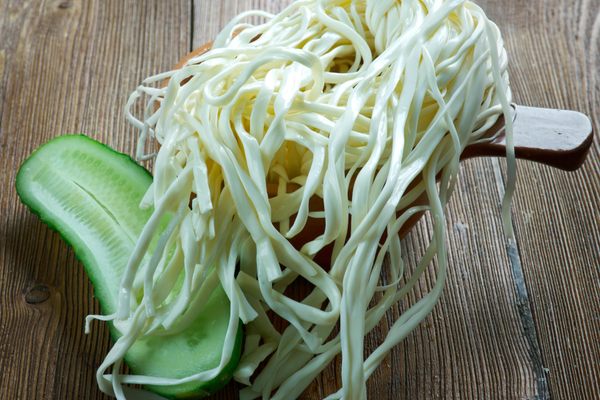On the Tibetan Plateau, nomadic herders rely on yaks that graze on the plains and surrounding valleys. These animals provide meat, milk, wool, and dung used for fuel. Herders drink fresh milk, use it to make yogurt, or churn it into butter, which is a popular choice at breakfast and in yak butter tea. Tibetans were one of the only Asian cultures to incorporate local (or any) dairy into their diets prior to the establishment of a global food market. But until relatively recently, these nomads had little interest in making yak cheese.
Tibet, which is currently an autonomous region of China, exports a limited amount of indigenous foods. With the support of international food conservation organizations, a senior monk at Ragya monastery in Qinghai brought yak cheese recognition in the early 2000s. For years, Jigme Gyaltsen oversaw a cheesemaking operation that ripened milk in yak dung–fueled copper vats, then dry-cured the 10-pound wheels and aged them in local salt. Though the resulting cheese earned fame after being exported to upscale restaurants, Jigme Gyaltsen no longer produces it.
However, small-scale yak cheese production and tasting remains a draw for visitors staying in guesthouses while backpacking through the Himalayas. Despite their wild, gamey appearance, yaks produce a high-fat cheese that tasters call delicate, a little smoky, and nutty.
Where to Try It
-
Pumpernickel Bakery
Thamel, Kathmandu, 44600, NepalTry yak cheese on homemade bread at this long-standing bakery in Kathmandu.
-
This specialty restaurant offers the neighborhood's Tibetan and Nepalese community a taste of home. Yak cheese is served both plain and fried.
Written By
 rachelrummel
rachelrummel
Sources
- www.fondazioneslowfood.com/en/slow-food-presidia/tibetan-plateau-yak-cheese/
- www.cooksinfo.com/yak-cheese
- www.grubstreet.com/2014/09/yak-cheese.html
- culturecheesemag.com/cheese-bites/purity-yak-cheese
- www.tibetheritagefund.org/pages/projects/rural-tibet-projects/qinghai-program-amdo-kham/ragya-monastery.php














